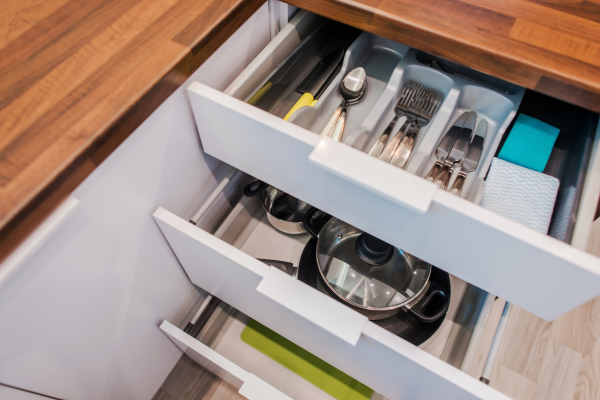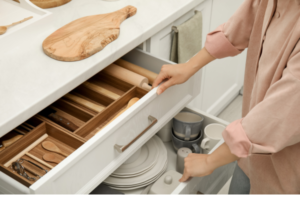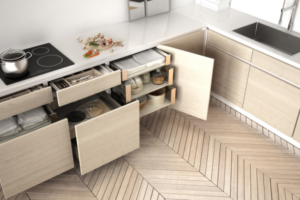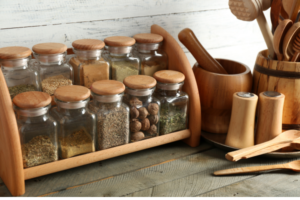Introduction
A well-organized kitchen is not only visually appealing but also highly functional. Among the chaos of pots, pans, spatulas, and ladles, lies the key to culinary efficiency – organizing your kitchen utensils. A clutter-free space not only saves time but also enhances the cooking experience. In this comprehensive guide, we’ll delve into effective strategies and smart solutions to master the art of organizing your kitchen utensils.
Assessing and Sorting
The first step in organizing your kitchen utensils is assessing and sorting through them. Empty your utensil drawers or containers and evaluate each item. Discard damaged or duplicate utensils and set aside those rarely used. Group similar items together; separate spoons from spatulas, ladles from whisks. This initial sorting process streamlines the organization process and helps identify the storage solutions needed.
Decluttering and Minimalism
Embrace the concept of minimalism in your kitchen. Minimalist organization focuses on functionality and purpose. Keep only the utensils you frequently use or those with multiple functions. Consider donating excess utensils to minimize clutter. By adopting a minimalist approach, you not only free up space but also ensure that each utensil serves a specific and essential purpose in your kitchen.
Choosing Suitable Storage Solutions
Once you’ve sorted your utensils, selecting the right storage solutions is crucial. Drawer dividers, utensil trays, hanging racks, and magnetic strips are effective options. Drawer dividers help segregate different utensils, ensuring easy access and preventing tangles. Utensil trays or containers keep items organized and prevent overcrowding in drawers. Hanging racks or hooks are ideal for displaying frequently used utensils, saving drawer space and adding a decorative touch to your kitchen. Magnetic strips offer a unique way to store metallic utensils while also creating a visually appealing display on the wall.
Strategic Placement
Where you place your utensils matters significantly for ease of access and efficient workflow. Store frequently used utensils close to your cooking area. Arrange them based on functionality; place spatulas and tongs near the stove, while measuring cups and spoons can be stored near baking supplies. Reserve deeper drawers or storage areas for bulkier items like mixing bowls or larger pots. Strategic placement enhances convenience and ensures a smooth cooking process.
Labeling and Maintenance
Consider labeling containers or drawers to identify specific utensils and maintain organization. Labels help in quick identification and also encourage others in the household to adhere to the organizational system. Additionally, regular maintenance is key to sustaining an organized kitchen. Dedicate a few minutes each week to reassess and rearrange if necessary. Return misplaced items to their designated spots to maintain the order.
Utilizing Vertical Space
Maximize every inch of your kitchen by utilizing vertical space. Install wall-mounted racks or pegboards to hang your utensils. These versatile storage solutions not only save drawer space but also showcase your utensils as a decorative element in your kitchen. Hang pots, pans, and frequently used tools for easy access while freeing up valuable countertop or drawer space.
Customized Storage for Specialty Utensils
Specialty utensils like rolling pins, pasta makers, or large serving spoons often require specialized storage. Consider customizing storage solutions for these unique items. Vertical containers or tall jars can house longer utensils, while hooks or brackets on cabinet doors provide a space-saving option for bulky items. Custom storage ensures these specialized utensils are easily accessible yet neatly organized.
Implementing a Rotation System
For those who enjoy a variety of utensils or frequently try new kitchen gadgets, implementing a rotation system can be beneficial. Instead of overcrowding your drawers, rotate utensils based on seasonal use or frequency. Store less-used items in a separate container or area, swapping them out periodically. This practice maintains organization while allowing for the exploration of different utensils without cluttering your primary storage spaces.
DIY Organization Hacks
Explore DIY organization hacks to optimize space and tailor storage solutions to your kitchen’s unique layout. Repurpose items like old jars or cans as utensil holders by decorating them to match your kitchen decor. Use tension rods inside drawers to create customizable dividers or repurpose a pegboard by attaching hooks and baskets for a customizable wall storage system. DIY hacks not only add a personal touch but also offer cost-effective solutions for organizing your kitchen utensils.
Consistent Maintenance and Adaptation
Regular maintenance is the cornerstone of an organized kitchen. Dedicate time weekly or monthly to reassess your organization system. As your cooking habits evolve or new utensils are added, be willing to adapt and modify your storage solutions accordingly. Consistent upkeep ensures that your organized kitchen remains functional and tailored to your needs.
Seeking Inspiration and Ideas
Finding inspiration from various sources can spark creativity in organizing your kitchen utensils. Explore online platforms, magazines, or social media for organizational tips and innovative storage solutions. Engage with online communities or forums where individuals share their experiences and ideas for organizing kitchen spaces. Drawing inspiration from others can lead to discovering unique and effective ways to organize your utensils.
Conclusion
Effectively organizing your kitchen utensils is an ongoing process that transforms your cooking space into a harmonious and efficient environment. By employing a combination of strategic sorting, suitable storage solutions, and personalized organization techniques, you can create a functional and visually appealing kitchen. Embrace versatility, customization, and regular maintenance to adapt to changing needs and evolving culinary preferences. With these comprehensive strategies, you’ll not only achieve a clutter-free kitchen but also enjoy a seamless and enjoyable cooking experience every day. Start implementing these diverse tips and witness the remarkable difference an organized kitchen can make in your culinary journey!



